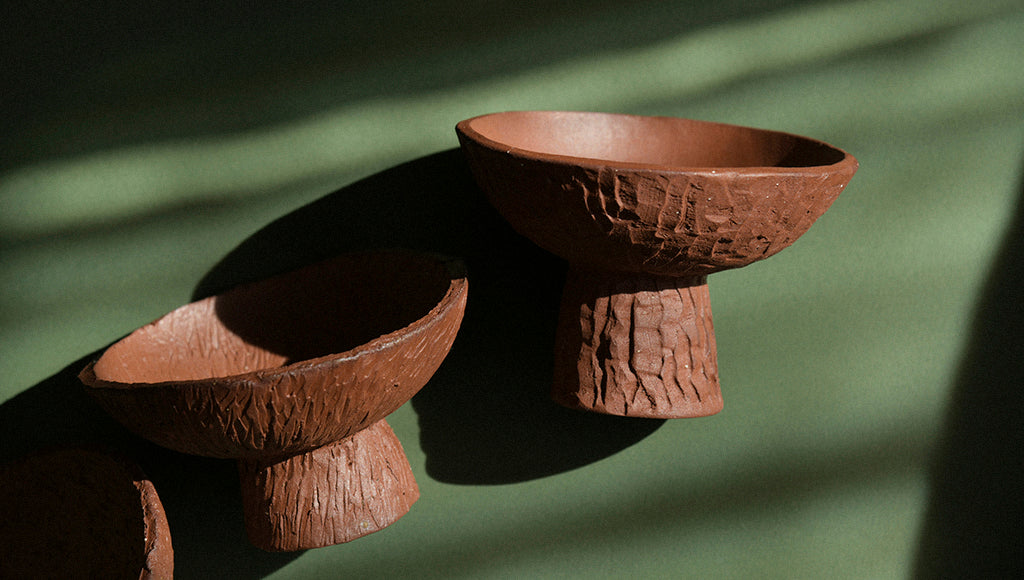It was a sunny October in 2021 when my sister and I took our grandmother on a trip to the place where she was born. In a small village in northern Croatia, now abandoned, there is an old worn house made of straw and clay where my grandmother spent her childhood in the 1930s. Surrounded by a forest with a view of the hills, listening to her stories I imagined how life used to be simpler, happier. It was physically difficult because they had to do everything themselves, but life was in harmony with nature, unburdened by meaningless things.
They didn't have much, and yet they were happy. They didn't have hot water, and in the summer the children bathed in the stream that ran through the property. They had many animals, like oxen and turkeys, while also growing all of their own food. The children had to walk several kilometers to school, and in winter they would walk barefoot only on the parts of the path where the sun's rays melted the frost. They had no money, and they didn't need it. They made everything themselves, and for what they didn't have, they would sell their eggs or homemade wine for things like sugar, salt, a ceramic bowl, etc.

Noticing that the house was made of clay mixed with straw, I got the idea to take some of the clay from the collapsed wall and make something that could be left to my grandmother as a memento of her old home.

At the time, I didn't know much about wild clay (unprocessed clay taken from nature), especially the clay from which houses were built, so of course I made a few beginner's mistakes. I enthusiastically started all of this thinking that it would be enough to just add water to the clay, but what happened next was that the straw in the clay got moldy so I had to let the mixture dry again. In the meantime, I also contacted the ceramicist Lidija Boševski, who is known for her ceramics made from wild clay that she finds in nature. She advised me that the straw should definitely be removed first because when firing, the straw would burn and leave holes in those places, causing the ceramic piece to crack and fall apart.
When the wild clay had finally dried well, the long work of pulling out each piece of straw began, followed by crushing the clay in a mortar so that all the materials in the clay were ground and evenly distributed. I sifted everything through a sieve so that there were no straw residues. I got a fine clay powder to which I then finally added water. After mixing everything well, I let it dry for a few days so that the excess water would evaporate, and I could get a clay mixture of the right consistency for shaping.


First, I needed to test the wild clay to see how it behaved when fired at different temperatures, so I fired only a few small pieces to start. If it was fired at a temperature that was too high for the clay to withstand, the clay would melt completely and turn into a puddle. In that case, wild clay can be used as a glaze* (see the note about that at the end). I was lucky that the clay from my grandmother's house retained its shape and strength at the higher temperatures at which stoneware is usually fired. I fire ceramics at higher temperatures because the clay becomes non-porous, stronger, and more durable than low-fired ceramics (earthenware).

My idea was to make a rustic-looking bowl with a stand. Little by little, shaping by hand and carving with tools, I got the desired look. Since I still had a good amount of clay left, I decided to make two more bowls. Each one ended up being different – with different textures and shapes, each unique in its own way. When together they make a whole, and complement each other, just like us humans.


After the first bisque firing in the kiln at a temperature of 960 °C, the clay bowls took on a terracotta color, but since they were still porous, I put them through a second firing at 1200 °C.

Then the bowls got their final look – a beautiful maroon-red color with small shimmering particles. Since the clay from which the house was built has a diverse composition, it contains minerals which after firing reflect light like mirrors, shimmer in the sun, making the bowls even more impressive. The bowls are designed to be a sculptural piece, but can also be used to display jewelry, fruit, etc.




I wanted to preserve that whole experience – traveling, listening to stories about the past, and nostalgic memories of other times – in the form of ceramic bowls made from this very special wild clay.
You can watch every step of the process in the WILD CLAY PROJECT video.

*When wild clay extracted from nature is used as a glaze, without sending it for chemical analysis, I would not recommend using wild clay as a glaze for making ceramics that will be in contact with food (especially for making objects in which liquids are contained for longer periods - such as cups, bowls, etc.). Because regardless of the fact that it is fired at high temperatures, it is a matter of the composition of the clay itself. Such wild clay used as a glaze is most often not stable (it has a poor chemical composition – an awful lot of primary fluxes, and a large amount of silica and aluminum oxide). This means that metals (some of which can be toxic) found in wild clay glazes can leak into the food. For a complete understanding of clays and glazes, I recommend taking the Education by Prof. Čazim Čazo Mehmeti.
—
WILD CLAY PROJECT / BRÉZA CERAMICS / October 2021
Photo: Stela Kovačić

